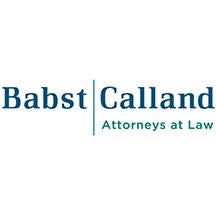On July 17, 2024, Governor Josh Shapiro signed the Carbon Capture and Sequestration Act into law, effective immediately. This comprehensive new statute positions Pennsylvania to join a growing list of states, including North Dakota, Wyoming, Indiana, and West Virginia, that promote underground storage of carbon dioxide.
The Act authorizes the underground injection and sequestration of CO2; confirms that the surface owner of real property owns the subsurface pore space; gives the Pennsylvania Department of Environmental Protection statutory authority to obtain primacy to issue injection permits; transfers title to stored carbon dioxide to the Commonwealth fifty years after injection ends; and establishes the Carbon Dioxide Storage Facility Fund to defray the Commonwealth’s long-term monitoring and management costs.
The Act has three key aspects – pore space ownership, permitting and operating an injection and storage facility, and liability and long-term responsibility for sequestered CO2.
Pore Space Ownership. The Act provides that the owner of the surface property interest owns the pore space beneath surface lands and waters of Pennsylvania. “Pore space” means subsurface strata, formations, cavities, or voids, whether natural or artificially created, that can be used to store CO2. Conveying surface ownership also conveys the pore space unless it is (or has been) excepted and reserved, similar to the conveyancing of oil, gas, and minerals. The Act does not change Pennsylvania law regarding dominance of the mineral estate. A notice regarding pore space, like the coal notice, is now required in property deeds.
If, through negotiations with pore space owners, a prospective operator obtains at least 75% of the ownership interest in pore space for a storage facility, the Environmental Hearing Board may include the remaining 25% in the proposed facility by issuing a “collective storage order” if the EHB finds that the operator satisfied the notice and other provisions of the Act. Other state statutes have different thresholds for pooling; for example, the threshold is 60% in North Dakota, 70% in Indiana, and 75% in West Virginia. Unless the landowner or manager agrees, the EHB may not approve a collective storage order for land owned by a governmental entity or by a charitable organization that is used to protect natural or scenic values or wildlife, or to preserve historical and cultural resources.
Permitting. The new law directs the Environmental Quality Board to promulgate permitting criteria and regulations. Although DEP is not specifically directed to apply to EPA for primacy to issue Class VI Underground Injection Control permits, the Act does provide authority for DEP to do so if it chooses, and DEP recently announced its intent to apply for primacy. Until primacy is obtained, EPA will issue UIC injection permits in Pennsylvania.
The EQB’s regulations must address several specific subjects for permitting injection wells and operating storage facilities, including community and cumulative impacts, environmental justice, and seismicity monitoring. A storage facility must be designed to isolate CO2 from coal, oil, gas, and other commercially valuable minerals. DEP may condition or deny a permit based on these considerations. We can expect the EQB to publish proposed regulations soon to implement the Act.
CO2 Ownership, Liability and Long-Term Responsibility. The storage operator is presumed to own the CO2 injected into a storage facility. The Act protects pore space owners from liability for the effects of injecting CO2 for sequestration based solely on their interest in the pore space and it protects storage operators from claims for damage or migration unless a claimant proves the injection or migration was performed without reasonable care and caused injury. DEP may issue a certificate of project completion 50 years after injection ends if the operator demonstrates that the injected CO2 will remain within its pore space boundary and does not threaten drinking water, human health, safety, or the environment. Thereafter, title to and responsibility for the injected CO2 passes to the Commonwealth and the storage operator is released from regulatory requirements regarding the facility. The Carbon Dioxide Storage Facility Fund will subsidize the Commonwealth’s cost to monitor and manage the closed storage facility. Other states (for example, North Dakota and West Virginia) have agreed to accept long-term responsibility for sequestered CO2.
Carbon capture and sequestration has been touted as a solution to reduce carbon emissions from fossil fuel-fired power plants[1] and a mechanism to generate valuable emission reduction credits for sale or trading. Pennsylvania did not have the statutory framework in place to compete with other states in this area until it adopted the Carbon Capture and Sequestration Act. Determining whether Pennsylvania has sufficient deep geology to make capture and sequestration economically attractive and developing the regulations to govern the industry are the next steps in this energy evolution.
[1] EPA’s latest iteration of regulations setting greenhouse gas emissions standards for power plants, which was published in May 2024, names CCS as best system of emission reduction for the longest-running existing coal units and most heavily utilized new gas turbines. The Carbon Capture and Sequestration Act could help power generators comply with the federal regulations regarding their carbon emissions. While the regulation is currently in litigation in the U.S. Court of Appeals for the District of Columbia Circuit, the court has declined to stay the rule while litigation is pending.






 />i
/>i

